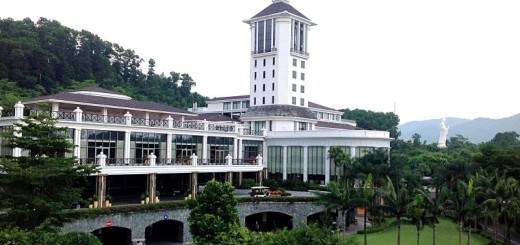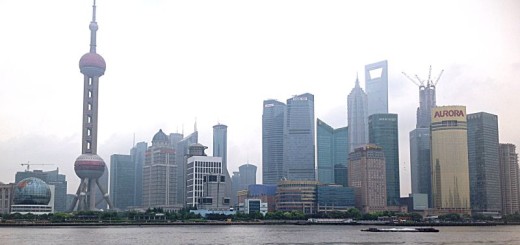Taking The High Road
Leaving Edinburgh and the St Andrew’s Golf Club, our coach tour set off to the Scottish Highlands. Crossing the Firth of Tay, and via Dundee and Perth, we headed into the highlands and the Victorian mountain resort of Pitlochry.
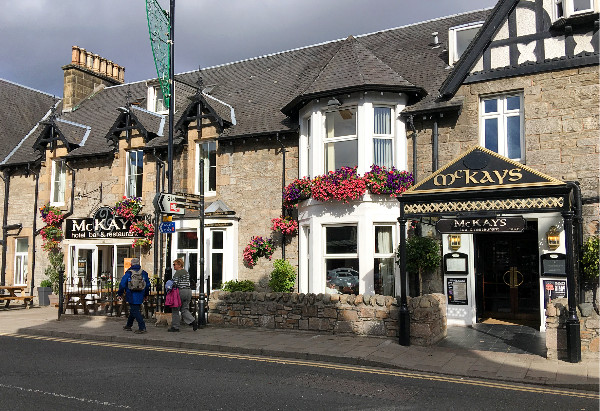
We had a brief stop to stretch our legs and admire the beautiful stone buildings along the main street, and a quick drink in McKays pub, before setting off to the battlefield of Culloden Moor.

Culloden is famous for the battle between the Jacobites, under Bonnie Prince Charlie (Charles Stuart), and the British Government forces on 16th April, 1746. This was Charlie’s final effort to restore the Stuart line (under his exiled father, James) to the British throne, before he escaped across to the Isle of Skye. On the day it is estimated 1,500 Jacobites lost their lives and were buried there in mass graves. Understandably, this area is seen by many as sacred ground and has protection as an historical site. A 6m high memorial cairn acknowledges the losses and several headstones mark the locations of the mass graves. Our visit included entry into the visitor centre where we examined the sombre artefacts and reports of the battle and its aftermath.

Our accommodation that night was in the historic Ben Wyvis Hotel at Strathpeffer. Built in 1879 with additions made over the following ten years, it was established to cater to the needs of wealthy clients during its days as a spa resort. It is set in extensive grounds, with gracious entrance gates leading the visitor up an avenue to the porticoed entrance. The interior decor remains much the same as its former grand appearance and was quite comforting at the end of a very cold day.
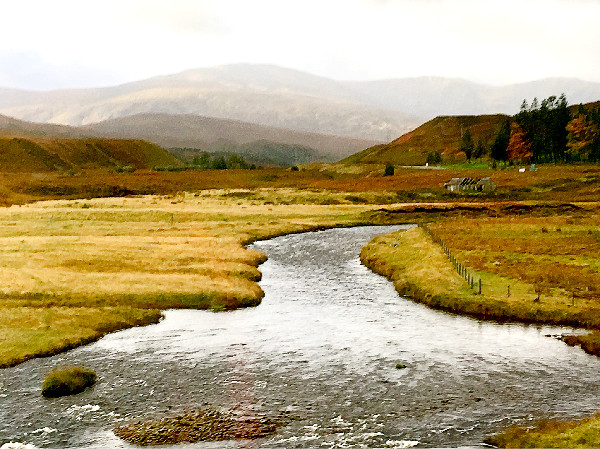
It was intended that our tour continue through Achnasheen and down to the bridge at Kyle of Lochalsh to reach the Isle of Skye, but unfortunately the bridge was under repair, something we did not discover until we had travelled as far as Achnasheen, down some very narrow back roads. It took some skill on the part of our coach driver to affect a turn-around in such conditions. However the wild scenery of heatherclad moors in these parts was worth the experience. An alternative route to the south of Inverness was then decided that gave us the chance to visit the Loch Ness Centre and Exhibition at Drumnadrochit.
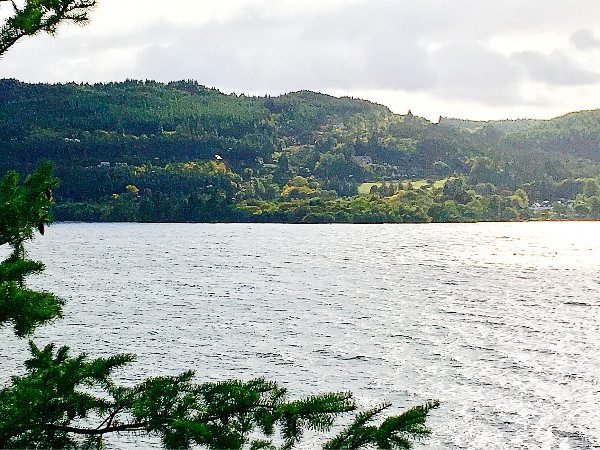
The Loch is 36.3 km long and only 2.7km wide and it seemed we were driving beside it for quite a while, with eyes scanning the surface for any hints of movement. But apparently Nessie was having one of her off days, so we moved on through Fort Augustus, Invergarry and Spean Bridge admiring more rugged scenery on the way to Fort William under the towering Ben Nevis. From there we were able to travel through the steep-sided valley of Glen Coe.
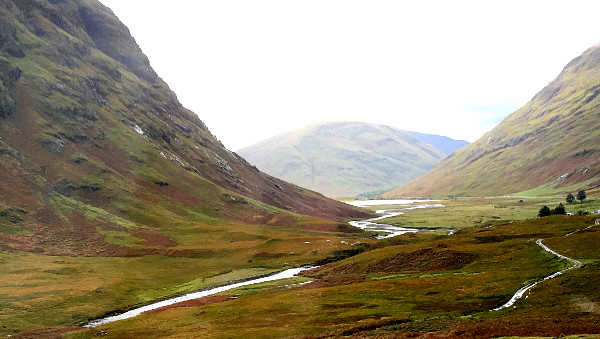
Glen Coe is probably one of the best known highland valleys in Scotland. Named after the River Coe that runs through it, the valley is actually a deep glacial trough bounded by rugged slopes rising steeply from sea level to summit altitudes of over 900 metres. Rock-climbing, hiking and paragliding are popular visitor activities in this wild and mountainous terrain.
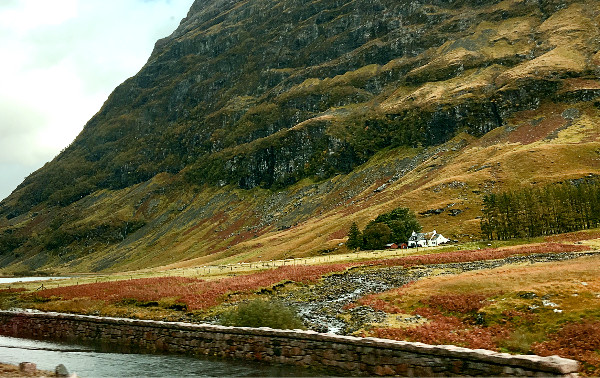
Glen Coe was the site of the massacre, in 1692, where members of the Campbell clan, acting as government militia, turned on their hosts and their sworn enemies, the MacDonalds, and killed 38 of them, in transgression of a highland code that in those cold, rugged areas hospitality must be offered by even your enemies.
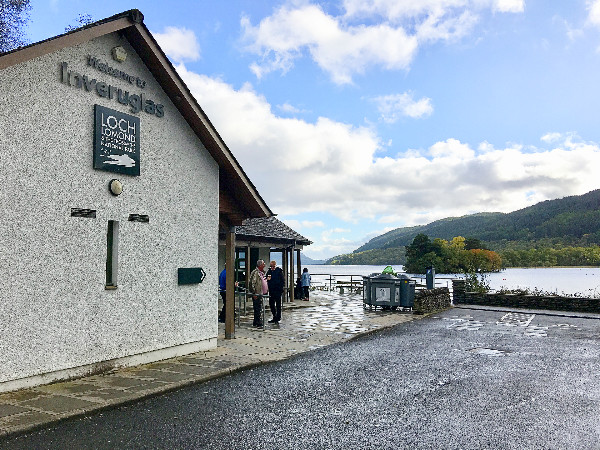
A drive along the “bonnie, bonnie banks of Loch Lomond” soon followed, and all too soon we were out of the Highlands and into the Lowland city of Glasgow on the banks of the River Clyde.
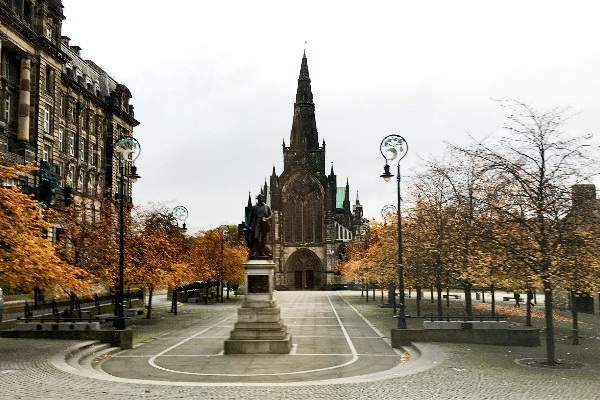
Although we stayed overnight, our accommodation was well out of the city so we didn’t get to do more than a drive-through as we were behind schedule. Just a quick stop to stretch our legs and take one or two photos and we were on our way again. The lovely Cathedral Square caught my interest, with its grand Royal Infirmary building and statue of explorer, doctor and missionary, David Livingston. The Cathedral itself, dedicated to Saint Mungo, Glasgow’s patron saint, was consecrated in 1197. It is the oldest cathedral in mainland Scotland and the oldest building in Glasgow, although much of the present cathedral dates from a major rebuilding in the 13th century.

Our final day in Scotland took us to the popular tourist attraction of Gretna Green, a small village synonymous with romance and runaway lovers. Back in 1754 a law was introduced in England requiring couples to be over 21 years before they could marry without parental permission. Breaking the law would mean a lengthy imprisonment for the clergyman. But Scotland’s extremely flexible marriage tradition remained, where virtually anyone could perform the rite, proving a magnet for otherwise ineligible couples. Gretna Green’s location on the Scottish border, and on a toll road, made it the preferred choice of venue and marriages are still very popular there today due to its romantic connotations. The Blacksmith’s Forge was the preferred site of the ceremonies, as being the most important man in the little village in those early days, the blacksmith would have been called on to perform the ceremony..

Our time in Scotland soon came to an end, but there was one more stop of interest as we drove through the Lake District of Cumbria – Grasmere – where poet laureate William Wordsworth made his home from 1799 to 1803. Although his later years were spent in nearby Rydal Mount, when he died in 1850 he was buried in Grasmere. A visit to St Oswald’s Church cemetery afforded us the opportunity to see his simple headstone and beside it, the stone ledger recording his and his wife’s details, along with other family members buried there, on the grave of his father.
But the day was far from over. Next stop – Liverpool.



